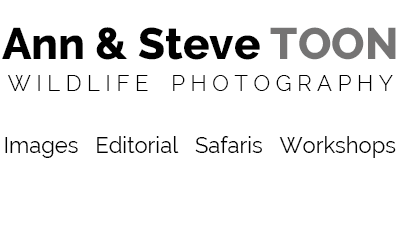Wildlife photography really is a Marmite profession. We’re either tearing each other’s hair out through frustration or hugging each other for sheer joy. There’s no middle ground.

We’ve waited a long time to photograph cheetah cubs this size in the Kalahari
We were reminded of this fact again recently on our last visit to the Kalahari, a few short weeks ago, when we managed to shoehorn ourselves into a packed Kgalagadi Transfrontier Park for a couple of weeks last minute before the first of our new African photo safaris. The idea was that some time spent in one of Africa’s last wilderness areas would refresh us after a particularly hectic time back home in the office trying to twist editors’ arms into running our material etc etc. We reckoned a good photographic ‘tune-up’ in the field before meeting up with and leading our first safari guests would be just the ticket.

Leopards were like buses. Two came at once on our recent visit to the KTP
A good idea in theory, but we’d forgotten to factor in the Marmite effect. For the first week we struggled to find a rubbish subject to train our lenses on, let alone a decent one. Ordinarily in these situations we’d change camps to see if other parts of the park proved more fruitful, but the place was chock full. Daily marches to reception to see if there was a cancellation somewhere drew a blank and the dust started to build up on our barely-used gear.

To get lion and cheetah cubs on a short visit was special
Anyone who has been to the Kgalagadi Transfrontier Park will know that seldom are things served up on a plate in this vast thirstland landscape. It’s never easy getting great images even though it is one of our top spots to photograph in.

This female walked straight towards our lenses
Goodness knows how many hours we’ve spent parked up waiting for something to happen, or driving up and down the same old sandy, corrugated tracks that trace the dry riverbeds of the Nossob and Auob. Patience and persistence are essential tools in the armoury in this semi-desert eco-system. Nine times out of ten the cheetah we’ve been following for hours doesn’t hunt, or the chase explodes in the wrong direction leaving us with nothing but a big anti-climax for our efforts. Leopards stay tantalisingly out of camera reach on the far calcrete ridges or glare down disdainfully from the intensely-dappled shade of a camethorn tree – a perfect jewel marred by its bad setting. Great to witness but lousy to photograph subjects can sustain a photographing couple only so long.
This photographic drought was something else. The days were fast slipping by and we had zilch to show for it. Our grumpiness was getting worse…
Then suddenly the pendulum swung in the opposite direction. Would you credit it? Out of nothing we suddenly found ourselves with seven leopard sightings in as many days (something of a personal record for the KTP). Not one but two confiding female leopards chose to share their early morning patrols with us, posing close to the cameras, which is not your typical wild leopard response to interlopers. Three tiny cheetah cubs (still with their white fur hoodies intact and our first at this young age for several years) turned up out of the blue. They hung around for ages with mum so we had both evening and morning drives with them playing and getting up to mischief while we clicked away.

You can’t stay grumpy for long when you have photo opps like this
Then, en route for our second helping of said cheetah cubs, we tripped over a couple of really little lion cubs beautifully lit at dawn. They were totally under our radar until that morning. You couldn’t have scripted a more opposite week to our first one.

Twenty years ago we hardly saw leopards they were so shy in the Kalahari
What a trawl of anniversary presents! We’ve been celebrating 20 years of visits to the Kalahari in 2016, but we never expected we’d be doing it with such brilliant photographic encounters as we had that second week. More Marmite please…

What a way to celebrate 20 years of visiting this magical African wilderness

